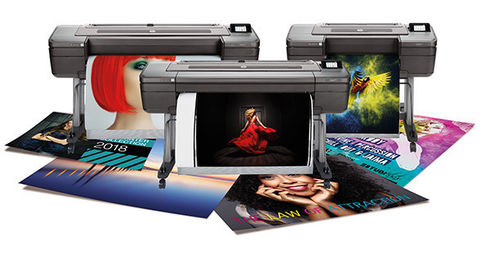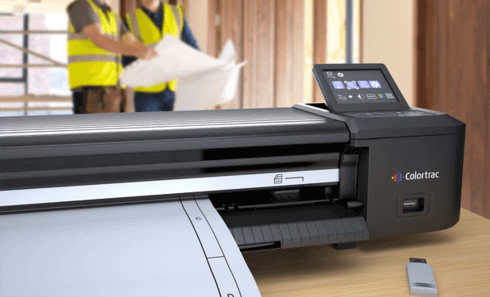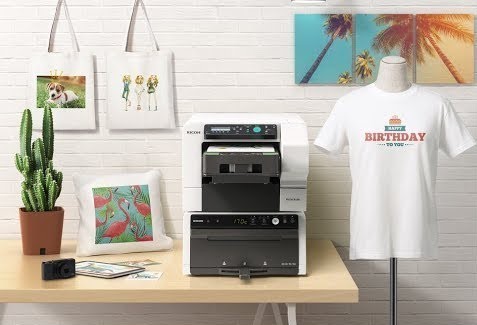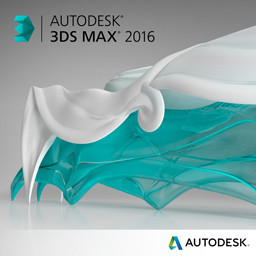- CAD Plotters
- Wide-Format Photo, Fine Art & Graphic Printers
- HP Latex, Outdoor, Signage, Wall Paper Printers & Cutters
- Wide Format Ink & Media Supplies
- Multi Functional Printers & Plan Copiers
- Large Format Scanners
- Finishing - Large Format Paper Folders, Trimmers, XY Cutters & Laminating
- Canon A4 and A3 Copier Paper
- Canvas, Stretcher Bars & Laminate
- Fabric Printers
- 3D Printers
- Bricsys BricsCAD® Software
- Colour Management & RIP Software
- Plotter Warranties
- Storage & Filing Systems
- OFFERS
Why use plot-IT?
- Est since 1965
- Group turnover - £15 million
- 5 UK offices with over 100 staff
- HP Designjet Warranty Provider
- Autodesk Gold reseller
- Canon Elite Partner
- Stratasys - Gold Partner
3DS Max | Autodesk
Autodesk 3DS Max - Annual Desktop Subscription
-
Please contact us on 01905 454 598 for a quote
-
Description

Create high-resolution 3D assets for entertainment and design projects, with comprehensive animation, modelling, and rendering tools.
-
3D animation
Text tool NEW - AVAILABLE WITH EXTENSION 1
Add data-driven information to your scenes. Choose the level of control you need for your work: edit entire paragraphs and words or individual letters. 3ds Max also retains information such as font theme, font style and glyphs when you copy text from Microsoft Word documents, simplifying your 2D-to-3D workflow.Geodesic Voxel and Heatmap skinning NEW AVAILABLE WITH EXTENSION 1
Generate better skin weighting at a fraction of the time. Run Geodesic Voxel and Heatmap skinning outside of the bind pose and even on selected areas to refine your weighting in particular spots more easily. Geodesic Voxel Skinning can handle complex geometry that is not watertight and can contain non-manifold or overlapping components - as is frequently the case with real-world production meshes.Max Creation Graph animation controllers NEW AVAILABLE WITH EXTENSION 1
Author animation controllers in MCG, using a new generation of animation tools that you can create and modify, package and share. Extension 1 includes 3 new MCG-based controllers: LookAt Constraint, Ray to Surface Transform Constraint and Rotation Spring Controller. Create physically based simulation controllers with MCG and the Bullet Physics engine sample integration.Camera Sequencer NEW
Tell great stories by creating high-quality animated visualisations, animations and cinematics more easily and with more camera control. Cut between multiple cameras, trim and reorder animated clips non-destructively - leaving the original data unchanged.Dual Quaternion skinning NEW
Create better skinned characters with more realistic deformations. Avoid “bow-tie” or “candy-wrapper” effects, in which the mesh loses volume as deformers are twisted or pivoted, which can commonly occur in characters' shoulders or wrists. This new option in the Skin modifier enables you to paint the amount of influence skinning has on a surface; use it where you need it, and taper off to linear skinning where you don't.Populate crowd animation
Generate believable moving or idle crowds with a high level of control to enrich architectural presentations or to pre-visualise a film or video scene. A set of animated characters can appear in common public settings, such as footpaths, hallways, lobbies and plazas. Connect walkways into patterns of pedestrian flow with crowd composition tools.Populate enhancements
The enhanced Populate crowd animation feature offers increased artistic control, better realism and improved usability. Give characters more convincing walking, jogging, passing, turning and seated behaviours. Control more aspects of character generation to influence their outcome. Save textures for re-use, customisation, and network sharing and rendering. Customise Populate through an SDK (software development kit).Character animation and rigging tools
Perform procedural animation and character rigging with CAT, biped and crowd animation tools. Use the Skin modifier and CAT Muscle for smoother, more precise control of skeletal deformation. Rig complex mechanical assemblies and characters with custom skeletons using 3ds Max bones, inverse kinematics (IK) solvers and customisable rigging tools. Wire 1-way and 2-way relationships between controllers to help create simplified 3D animation interfaces.General animation tools
Use key-frame and procedural animation tools for almost any parameter in your scene. View and edit animation trajectories directly in the viewport. Implement custom animation controls by wiring UI elements, such as sliders and spinners, to an object's animatable tracks, and control multiple attributes with a single slider. Use the Dope sheet to edit slide, move and scale keys or sets of keys in both time and value.Animated deformers
Add life to creatures and simulate fluidic effects with Freeform, Affect Region, Bend, Displace, Lattice, Mirror, Noise, Physique, Push, Preserve, Relax, Ripple, Shell, Slice, Skew, Stretch, Spherify, Squeeze, Twist, Taper, Substitute, XForm and Wave modifiers. World Space modifiers operate atop the modifier stack and bind objects to animated world conditions, such as surfaces, forces, fields and deflections. Use animated deformers on particles and other geometry types. -
3D modelling and texturing
OpenSubdiv support NEW
With new support for OpenSubdiv, first introduced in 3ds Max 2015 Extension 1, you can now represent subdivision surfaces using the OpenSubdiv libraries open-sourced by Pixar. The libraries incorporate technology from Microsoft Research and are designed to take advantage of both parallel CPU and GPU architectures. The result is faster in-viewport performance for meshes with high subdivision levels.Enhanced ShaderFX NEW
Get more shading options and better shader interoperability between 3ds Max, Maya and Maya LT. Create a wider range of procedural materials with new node patterns, including wave-lines, voronoi, simplex noise and brick. Create normal maps from 2D gray scale images with a new bump utility node. Quickly access shaders through the searchable node browser.Point cloud support
Import, visualise, snap to and render massive point cloud data sets to create more precise models from real-world references. View point clouds in true colour in the viewport, interactively adjust the extent of the cloud displayed and create new geometry in context by snapping to point cloud vertexes.ShaderFX
Easily create advanced HLSL viewport shaders with the ShaderFX real-time visual shader editor. Connect different nodes using an intuitive click-drag workflow. Select from a powerful array of floating-point values, mathematical operations, texture maps, normal maps and colour nodes. Visualise the resulting materials, even those with animated values, in real time in the viewport. Drill down into the inner workings of each basic node in the advanced mode.Placement tools
Easily position and orient content relative to other content in your scene with new Placement tools. Take advantage of intuitive auto-parenting and aligning behaviours. Move objects along the surface of other meshes as though magnetically attracted. Quickly rotate objects as part of the same option.Quad chamfer
Create a chamfered or bevelled edge between two surfaces consisting of quads, rather than triangles, to help eliminate pinching.Mesh and surface modelling
Efficiently create parametric and organic objects with polygon, subdivision surface and spline-based modelling features. Work with more than 100 advanced polygonal modelling and free-form 3D design tools in the Graphite modelling tool set. Control the number of faces or points in your object with ProOptimiser technology and reduce the complexity of a selection by up to 75%, without a loss of detail. Obtain clean mesh topology on Boolean operations with ProBooleans.Texture assignment and editing
Perform creative texture mapping operations, such as tiling, mirroring, decal placement, blurring, spline mapping, pelt mapping, UV stretching and relaxation. The Least Squares Conformal Mapping (LSCM) method enables you to minimise texture distortion. Bake each object’s material and lighting into new texture maps with the Render to Texture functionality. Use up to 99 UV sets for texture layering. Load vector graphics as texture maps for rendering at dynamic resolutions.Shading and material design
Get the look you want for your assets with tools specifically designed to accelerate the shading and material design process. Extensive libraries of textures, images and procedural maps in the Slate material editor enable you to design and edit complex shading hierarchies. Paint multiple layers onto any map in any material, directly onto 3D objects with the intuitive Viewport Canvas toolset.Vector map support
Load vector graphics as texture maps and render them at dynamic resolutions. Zoom in as needed, and graphics remain crisp and clear. Create richer and more dynamic CAD illustrations with support for AutoCAD PAT Hatch Pattern files. Create textures that change over time, with PDF support that includes animated page transitions. Supports AI (Adobe Illustrator), SVG and SVGZ formats.Polygon, spline and NURBS-based modellingUnleash your creativity with more than 100 advanced polygonal modelling and free-form 3D design tools in the Graphite modelling tool set and the powerful ProOptimiser. Create parametric and organic objects efficiently with polygon, spline and NURBS-based modelling features. Articulate minute details and optimise meshes for both interactive manipulation and rendering using subdivision surfaces and polygon smoothing. -
3D rendering
3D rendering
A360 rendering support NEW - RERENDER WITH SUBSCRIPTION
Using the same technology as Revit and AutoCAD, 3ds Max 2016 features Autodesk A360 rendering support for Subscription customers. A360 uses cloud computing, so you can create impressive, high-resolution images without tying up your desktop or requiring specialised rendering hardware. Create solar study renderings, interactive panoramas and illuminance simulations. Re-render images from previously uploaded files. Easily share your files with others.Physical Camera NEW
Co-developed with Chaos Group, the makers of V-Ray, the new Physical Camera has Shutter Speed, Aperture, Depth of Field, Exposure and other options that simulate real-life camera settings. Enhanced controls and additional in-viewport feedback make creating photo-realistic images and animations easier.Support for new Iray and mental ray enhancements NEW
Rendering photo-realistic images is easier now, thanks to a number of supported Iray and mental ray enhancements, such as extended Iray Light Path Expressions, support for the Iray irradiance render element and Light Importance Sampling.Improved ActiveShade rendering
The ActiveShade preview rendering workflow supports mental ray, NVIDIA Iray and scanline renderers. Watch the effects of changing lighting or materials interactively to refine your work. Get finer grain updates with more frequent captures of viewport navigation and switching, adjustments to light parameters and other scene changes.Iray and mental ray are registered trademarks of NVIDIA ARC GmbH, licensed for use by Autodesk, Inc.Accelerated viewport performance
Increase interactivity with fast navigation, selection and viewport texture baking. See particular benefits with dense meshes and scenes with texture maps. Enable anti-aliasing with minimal impact on performance so you can work quickly in a higher-fidelity environment.Stereo Camera
Create stereo-scopic camera rigs to author more engaging entertainment content and design visualisations with the Stereo Camera feature set.Note: The Stereo Camera feature set is fulfilled through the Autodesk Exchange application store (apps.exchange.autodesk.com). English language only.Integrated rendering options
Achieve stunning image quality in less time with powerful 3D rendering abilities. Generate physically correct lighting effects simulations, such as ray-traced reflections and refractions, caustics and global illumination, with the integrated mental ray renderer from NVIDIA. Get more predictable, photo-realistic results, using the NVIDIA Iray rendering technology. Make interactive decisions in context with the ability to view most texture maps and materials in the viewport.Render pass system
Segment scenes for downstream compositing. Create render elements for Smoke, After Effects, Photoshop or certain other image compositing applications. Use a state recorder to capture, edit and save different states for the scene, such as object modifiers. See how compositing and render elements connect to create the final result in a visual interface. Set up and execute multiple render passes from a single file and modify individual passes without re-rendering the whole scene.Nitrous accelerated graphics core
Iterate more quickly and handle larger data sets with limited impact on interactivity. Accelerated GPUs and multicore workstations offer dramatically improved interactive performance and visual quality. Advanced scene management techniques and multi-threaded viewport scene traversal streamline the workflow and make it more responsive.Slate Compositing Editor
Perform simple compositing operations within 3ds Max with the Slate Compositing Editor. Easily wire together rendered layers and passes, and combine them with compositing nodes (like blends and colour corrections) in the schematic node-based interface. You can send the resulting composite to Adobe After Effects or Adobe Photoshop for further refinement.









































